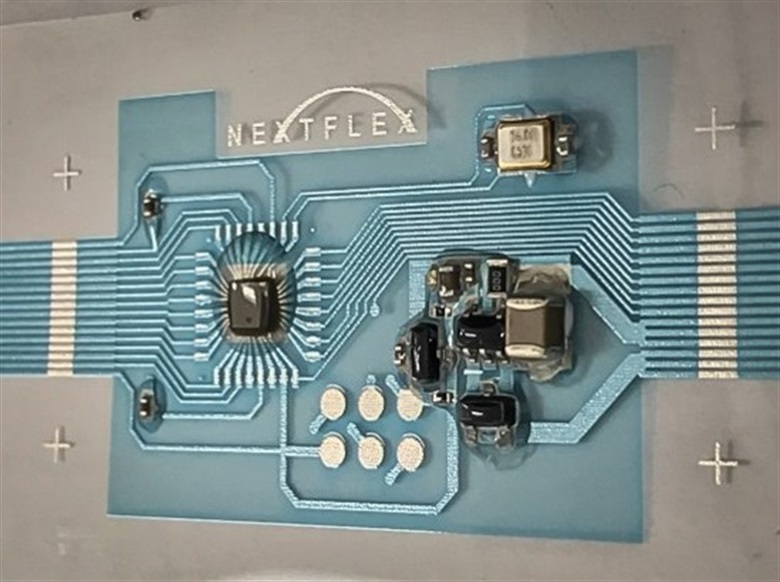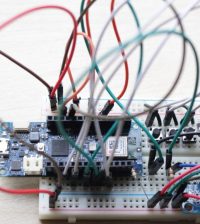- How to Adjust X and Y Axis Scale in Arduino Serial Plotter (No Extra Software Needed)Posted 2 months ago
- Elettronici Entusiasti: Inspiring Makers at Maker Faire Rome 2024Posted 2 months ago
- makeITcircular 2024 content launched – Part of Maker Faire Rome 2024Posted 4 months ago
- Application For Maker Faire Rome 2024: Deadline June 20thPosted 6 months ago
- Building a 3D Digital Clock with ArduinoPosted 11 months ago
- Creating a controller for Minecraft with realistic body movements using ArduinoPosted 11 months ago
- Snowflake with ArduinoPosted 11 months ago
- Holographic Christmas TreePosted 12 months ago
- Segstick: Build Your Own Self-Balancing Vehicle in Just 2 Days with ArduinoPosted 1 year ago
- ZSWatch: An Open-Source Smartwatch Project Based on the Zephyr Operating SystemPosted 1 year ago
Air Force Research Laboratory has been working on a Flexible Arduino

“Lightweight, low-cost and flexible electronic systems are the key to next-generation smart technologies for military as well as consumer and commercial applications.
An Air Force Research Laboratory-led project in conjunction with NextFlex, America’s Flexible Hybrid Electronics Institute, has resulted in the first ever, functional samples of flexible Arduino circuit board systems made by using a flexible hybrid electronics manufacturing process, setting the stage for smart technologies for the internet of things (IoT) and sensor applications like wearable devices.”
Instead of working on expensive systems made out of highly robust parts developed in ultra-secure laboratories in top-secret locations, the AFRL has developed a functional flexible Arduino-compatible board, which they claim to be the first of its type.
Using a simplified flexible hybrid electronics manufacturing process, the Nextflex team reduced the number of manufacturing process steps by more than 60% and the weight of the Arduino board by 98%. The flexible Arduino has a thin, flexible plastic sheet as circuit board on which the microcontroller is mounted without its case. Digital printing processes were used to create the connections between the circuit elements.
This project has resulted in the first ever, functional samples of flexible Arduino circuit board systems made by using a flexible hybrid electronics manufacturing process, setting the stage for smart technologies for the internet of things (IoT) and sensor applications like wearable devices.
Because of its flexible architecture, this board can be integrated with devices that may be flexible or curved in design or located in a narrow place, like a fuel tank sensor or sensors embedded in the wings that monitor the structural integrity of an aircraft. Wearable devices for monitoring for instance a pilot’s hydration status, glucose levels, heartrate and more are possible applications too.
















Pingback: Air Force Research Laboratory has been working on a Flexible Arduino @AFResearchLab - HudsonWerks
Pingback: Air Force Research Laboratory has been working on a Flexible Arduino @AFResearchLab – Arduino Boards News